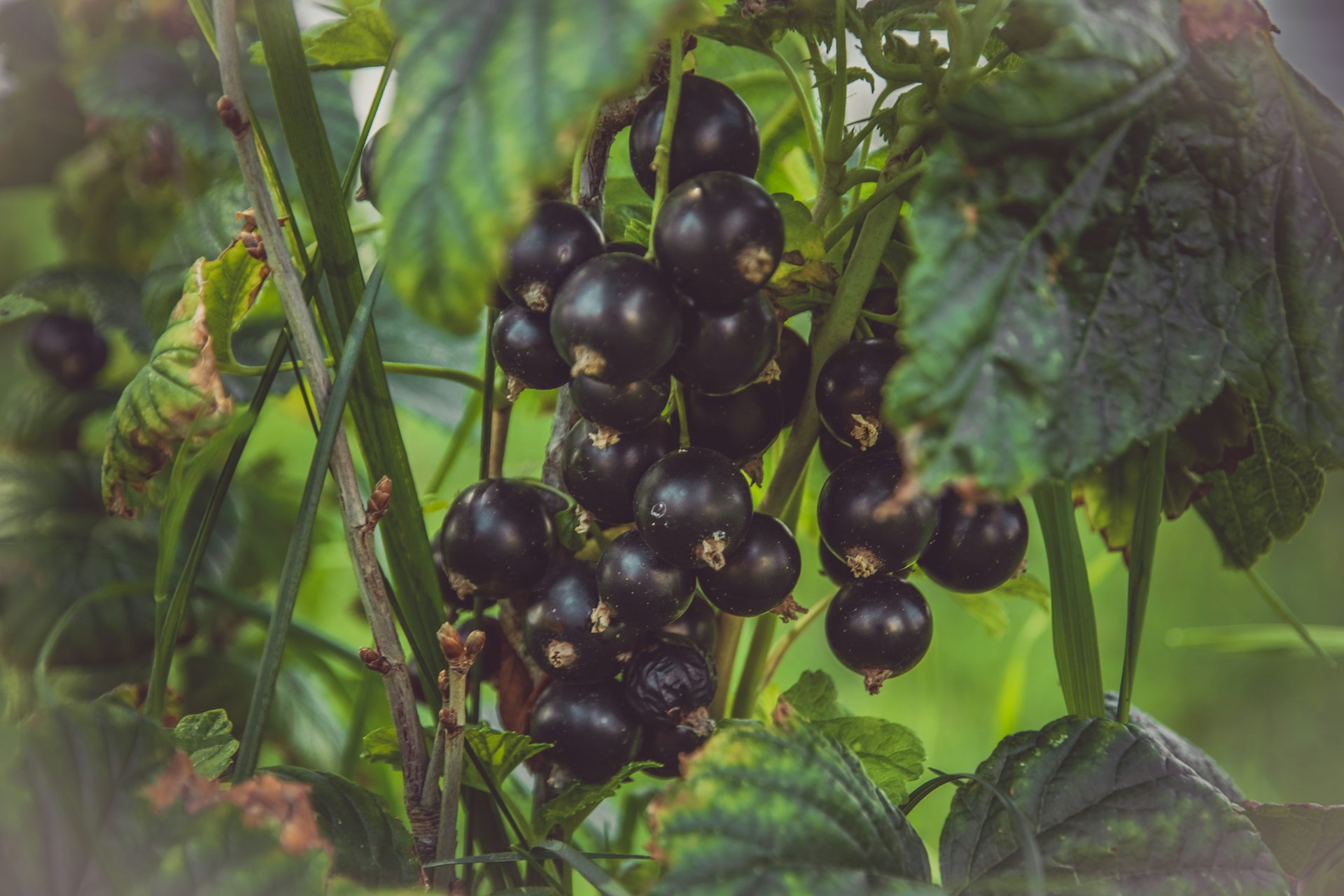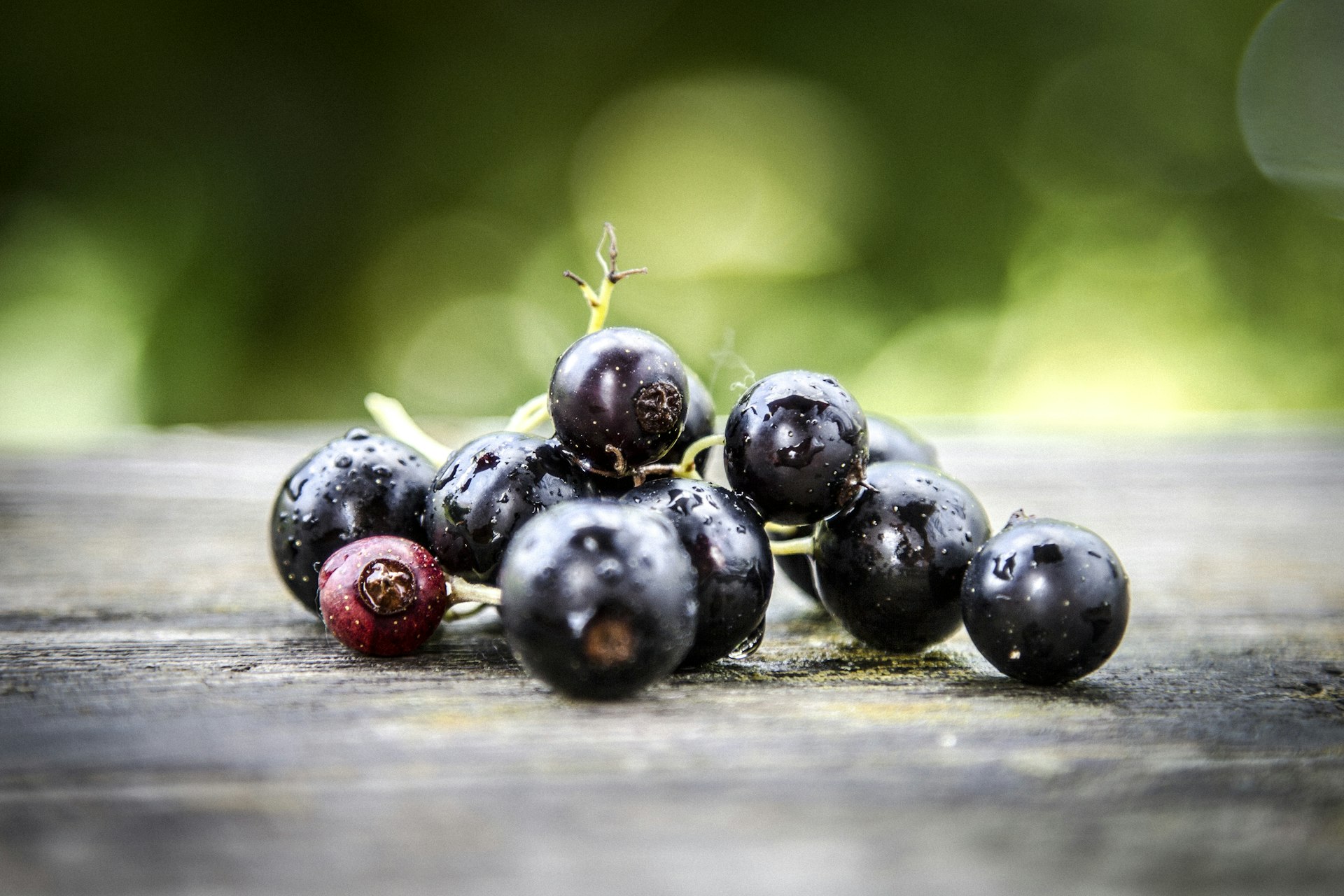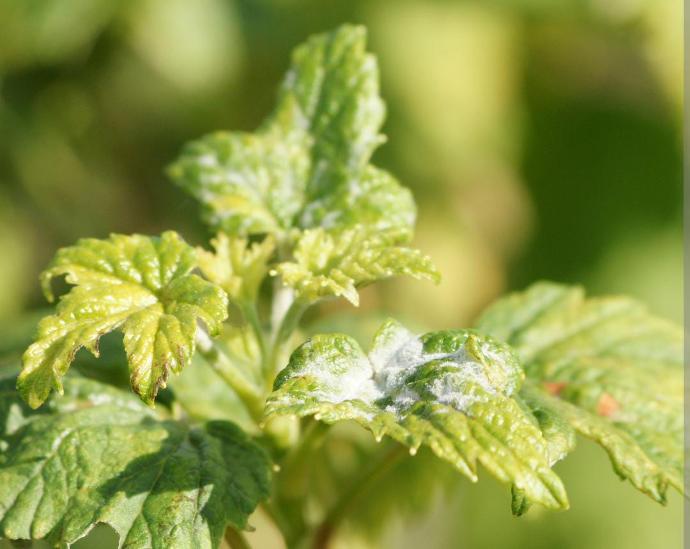Black Currant Shrub
Black currant shrubs, 3-5 feet tall in Zones 4-8, exhibit moderate growth in well-drained soil. Known for their small and edible currants, black currants are rich in antioxidants.

Habit
Shrub
Height
1-2 m
Growth
Moderate
Soil
Well-drained, loamy
Shade
Full sun to partial shade
Moisture
Moderate
Edible
Yes
Medicinal
Yes
Origin
Europe
Climatic Condition
Temperate
Temperature (°)
10-20°C
Humidity (%)
60-80%
Potting media
Loam + Sand
Fertilizers
Balanced NPK (10:10:10)
Watering
Regular watering
Plant Weight
500-800 g
Flowering Time
Summer to Fall
Soil Ph level
6.0-7.0
Water Ph level
6.5-7.0
Soil EC
0.9 dS/m
Yield Per Plant
High yield
NPK ratio
10:10:10
life Span
5-10 years
Health Benefits
High in vitamin C, immune support
Suggested Grow Media or Potting Mix ?
50% loamy soil, 30% compost, 20% sand
Suggested Fertigation/Fertilizers
Fertilize every 4 weeks with a balanced fertilizer.
Common Diseases and Remedies
powdery mildew , CORAL SPOT
yellow / orange / coral spots on the stems of blackcurrant bushes. , greyish powder which can appear on the fruit, leaves .
milk and water spray. , pruning
HEALTH BENEFITS
· High in vitamin C, boosting immunity
· Supports eye health and reduces inflammation
· May improve blood circulation and cognitive function
What Is A Black Currant tree?
black Currant (Ribes nigrum) is a deciduous tree belonging to the Grossulariaceae family. It is found in Europe and Northern Asia and is grown for its edible fruits. The plant usually grows to a height of 1-2 meters and has lobed leaves that are green on the surface and off-white underneath. The berries are small, dark purple to black and have a sour taste. They are often used in jams, jellies, syrups and desserts. The blackcurrant plant is also valued for its high vitamin C content and is used in traditional medicine for its health benefits.
What Are The Different Types Of Black Currant?
There are many varieties of the blackcurrant plant and each has its own characteristics. Some of the most popular are:
1. 'Ben Alder':
This variety produces large, sweet fruits suitable for fresh consumption and processing.
2. 'Ben Connan':
This variety is known for its high yield and disease resistance.
3. "Ben Lomond":
This variety produces large, sweet fruits suitable for fresh consumption and processing.
4. 'Ben Sarek':
This variety is known for its good growth, making it suitable for small gardens.
5. 'Ben Tirran':
This variety is known for its high yield and disease resistance.
How To Care For Black Currant?
Location
Currant plants prefer full sun to partial shade. They also like well-drained soil rich in organic matter. Currant plants tolerate many soil types, including sand, loam and clay, but do not tolerate water. It is also important to choose a location protected from storms, as currant plants are sensitive to weather conditions.
Sun light
Currant plants prefer full sun to partial shade. They can tolerate some shade but produce their best fruit in full sun. If you are growing currant plants in partial shade, make sure they receive at least 4-6 hours of direct sunlight per day. If you plant them in a sunny location, they will need at least 6-8 hours of direct sunlight per day.
Soil
Currant plants like well-drained soil rich in organic matter. They tolerate many soil types such as sand, loam and clay, but are not permeable. It is important that currant plants are not grown in very acidic soils, as they prefer slightly alkaline soils with a pH of around 6.5 to 7.5. If your soil is very acidic, you can add lime to raise the pH. If your soil is very alkaline, you can add sulfur to lower the pH.
Hydration
Currant plants need regular watering, especially during the dry season. They like soil that is regularly moist but not waterlogged. It is important to water regularly and deeply, rather than frequently and shallowly, as this encourages the roots to go deeper into the soil. Water at the base of the plant rather than the top to avoid wetting the leaves, which will cause fungal diseases. It is important not to overwater currant plants as this can cause root rot.
Nourishment
Currant plants benefit from regular cultivation to promote good growth and fruit production. It is best to fertilize currant plants in the spring as new growth begins to emerge. Use a fertilizer balanced with 10-10-10 or similar and use according to the manufacturer's instructions. Avoid fertilizing currant plants in the fall because this encourages new growth that may be damaged by frost. In addition to fertilization, blackcurrant plants also benefit from a layer of organic mulch, such as compost or well-rotted manure, used around the base of the plant. This will help retain moisture, reduce weeds, and add nutrients to the soil as it breaks down.
Issues
Growing blackcurrant plants is easy but you may encounter some problems:
1. Aphids: Aphids are small, soft-bodied insects that infest blackcurrant plants and suck the sap from the leaves, causing them to curl and twist. They can also become infected. To control aphids, you can spray your plants with insecticide or neem oil or introduce predators such as ladybugs or lacewings.
2. Powdery mildew: Powdery mildew is a fungal disease that affects black currant plants, causing white, powdery growth on the leaves. It is mostly found in warm and moist soil. To control powdery mildew, you can spray your plants with a fungicide prescribed for powdery mildew or prune disease.
3. Black currant blister aphid: This aphid is a pest of black currant plants. It can cause leaf deformation and blistering, and it can also become infected. To control currant aphids, you can spray your plants with insecticide or neem oil, or introduce predators such as ladybugs or lacewings.
What Are The Benefits Of The Black Currant?
The blackcurrant plant has many advantages:
1. Nutritional value: Blackcurrant is rich in vitamin C, antioxidants and other nutrients. They are also a good source of dietary fiber.
2. Health: Black currants are used in traditional medicine for their health benefits, such as strengthening the body, improving circulation and reducing pain.
3. * Culinary Uses *: Currants can be used in many types of dishes, including jams, jellies, syrups, desserts and beverages.
4. Attracts wildlife: Currant plants can attract birds and other wildlife to your garden by providing food and shelter.
5. Ornamental Value: Currant plants have beautiful leaves and flowers, making them a beautiful addition to your garden.
6. Easy to Grow: Blackcurrant plants are easy to grow and require little maintenance during the establishment phase.
7. * Disease Resistance*: Some varieties of blackcurrant plants are resistant to certain diseases, making them a good choice for organic areas. 
FAQs About Growing Black Currant?
1. Now how to care for black plants?
Control of blackcurrant plants involves several important steps:
1. Watering: Currant plants need to be watered regularly, especially during drought periods. Regularly use deep water instead of shallow water to encourage root growth.
2. * FERTILIZER*: Fertilize your currant plants with 10-10-10 or a similar balanced fertilizer in the spring, when new shoots begin to emerge. Apply the fertilizer according to the manufacturer's instructions.
3. * Pruning *: Prune currant plants in late winter or early spring to remove dead or damaged branches and similar vegetation. Remove branches that grow toward the center of the plant, as well as branches that cross or pull on each other.
4. Mulch: Apply a layer of organic mulch, such as compost or well-rotted manure, around the base of the plant to retain moisture, remove weeds, and add nutrients to the soil as it breaks down.
2. What are the current uses of the black plant?
The blackcurrant plant has many uses:
1. Edible Fruits: Blackcurrant is often used as an edible fruit. These fruits can be eaten fresh or used in a variety of cooking applications, including jams, jellies, syrups, desserts and beverages.
2. * MEDICINAL USES*: Blackcurrant is rich in vitamin C, antioxidants and other nutrients and is used in traditional medicine for its health benefits such as strengthening the body, improving circulation and reducing pain.
3. Attracts Wildlife: Black plants can attract birds and other wildlife to your garden, providing food and shelter.
4. Ornamental Value: Currant plants have attractive leaves and flowers, making them a beautiful addition to your garden.
5. * Dye *: The berries of the blackcurrant plant are used to produce natural dyes that can be used to color fabric and other materials.
3. Can black current be grown indoors?
Currant plants are often planted outdoors as they need full sun, partial shade and well-drained soil. However, if the conditions are suitable, you can grow blackcurrant plants at home. Here are some tips for growing blackcurrant plants indoors:
1. * Light *: Currant plants need full sun to partial shade, so it is important to provide them with adequate light. Place your plants in a south-facing window or grow light so they can get enough light.
2. Temperature: Blackcurrant plants prefer cool temperatures; ideal daytime temperatures are 60-70°F (15-21°C) and night temperatures are 45-55°F (7-13°C). Do not place the plant near a heater or air conditioner; This may cause the temperature to change too much.
3. Humidity: Currant plants like high humidity, so it is important to provide adequate humidity. You can increase the humidity by placing a pot of water next to the plant or using a humidifier.
4. * Water *: Water your blackcurrant plants regularly to ensure the soil remains moist but not waterlogged. It is important to water at the base of the plant rather than the top to avoid wetting the leaves, which can cause fungal diseases.
5. * FERTILIZER*: Fertilize your currant plants with 10-10-10 or a similar balanced fertilizer in the spring, when new shoots begin to emerge. Apply the fertilizer according to the manufacturer's instructions.
6. Pruning: Prune blackcurrant plants in late winter or early spring to remove dead or damaged branches and damage to the plant. Remove branches that grow toward the center of the plant, as well as branches that cross or pull on each other.
4. What is the best type of pot for growing black plants right now?
When planting currant plants in pots, it is important to choose the size and type of pot to ensure that the plant has enough space to grow and develop. Here are some tips for choosing the best pot for growing currant plants:
1. SIZE: Since currant plants have deep roots, it is important to choose a pot that is at least 45-60 cm (18-24 inches) deep. This will give the plant enough room to grow and develop a healthy foundation.
2. * Material *: Choose a pot made of durable material such as plastic, ceramic or clay. Do not use metal pots as they can heat up in the sun and damage plants.
3. Drain: Make sure there is adequate drainage at the bottom of the pot to drain excess water. This will help prevent waterlogging in the soil, which can cause root rot.
4. Weight: Consider the weight of the pot when choosing a location for your currant plant. If you plan to move the pot, choose a heavy material such as plastic. If you plan to store the pot somewhere, heavy items such as ceramics or terracotta will be more suitable.
5. Color: Choose a pot color that complements the leaves and flowers of your currant plant. Dark colors like black or brown can help absorb heat and keep the roots warm, while light colors like white or beige can help reflect warmth.
5. Where can I buy black herb now?
1. * Local nurseries and nurseries *: Many local nurseries and nurseries grow blackcurrant plants, especially in autumn, spring and summer.
2. * Online stores*: There are many online stores that specialize in selling plants and garden furniture, such as Amazon, eBay and Etsy. You can find blackcurrant plants on websites that specialize in selling blackcurrant trees and shrubs, such as Stark Bro's or Gurney's.
3. Farmers Market: Some farmers markets, especially in areas where blackcurrants are popular, may have vendors selling blackcurrant plants.
4. Local Plant Sales: Check with your local gardening club or community organization to see if they have plant sales where you can purchase blackcurrant plants.
5. Friends and family: If you know someone who has planted blackcurrant plants, you may have cut or divided them to grow your own plants.


